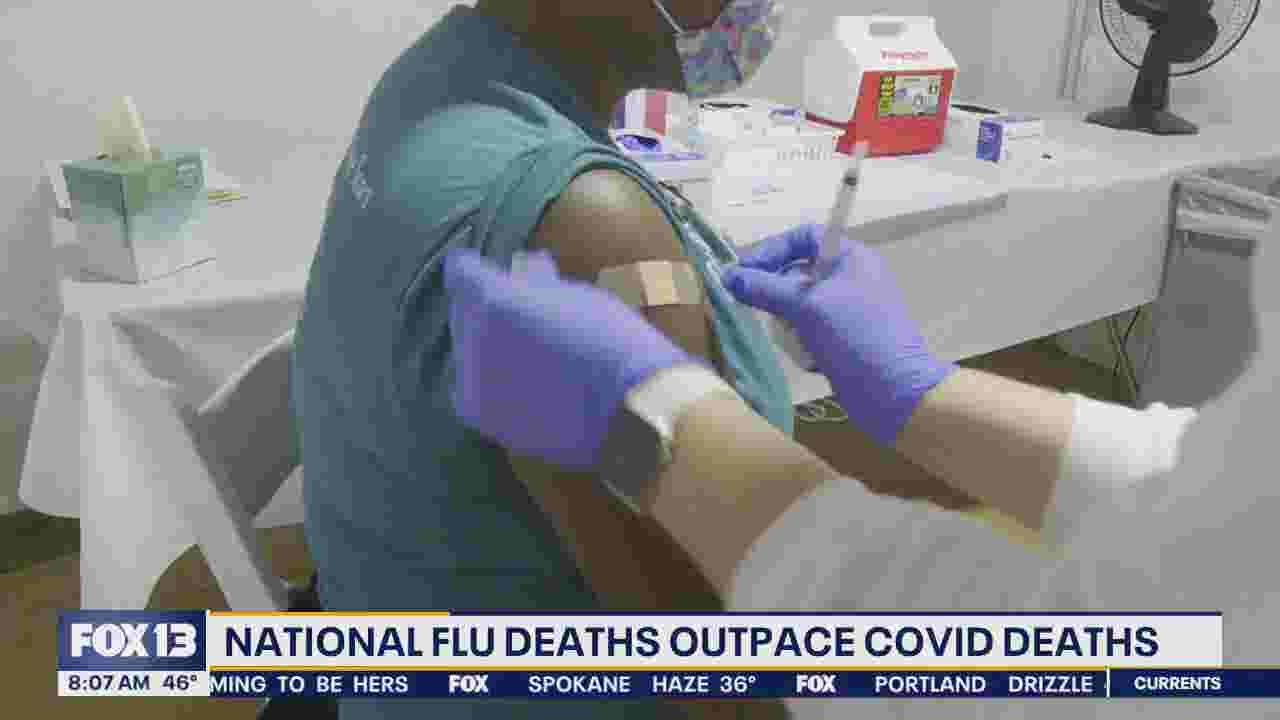Leading doctors have reacted to the emergence of a new coronavirus, calling its spread to humans an ‘eventuality.’
In scenes eerily reminiscent of the beginnings of Covid, researchers at the infamous Wuhan Institute of Virology in China recently detected the modified strain living within bats.
HKU5-CoV-2 is strikingly similar to the pandemic virus, sparking fears that history could repeat itself just two years after the worst was declared over.
The new virus is even closer related to MERS, a deadlier type of coronavirus that kills up to a third of people it infects.
Dr William Schaffner, a professor of preventive medicine and infectious diseases at Vanderbilt University Medical Center, told DailyMail.com that while there is no indication that this newly-discovered virus is moving into human populations yet, the ‘world must prepare for that eventuality’.
The virus’ discovery shows there are threats lurking and there is no time for complacency, he said.
‘This new discovery reinforces the reality that there are many potential virus pandemic threats still in nature that could spill over into the human population,’ Dr Schaffner said.
In scenes eerily reminiscent of the beginnings of Covid , researchers at the infamous Wuhan Institute of Virology in China recently detected the modified strain living within bats
‘The world needs to be more prepared than ever because rapid travel knits the world’s population together very tightly.
‘International collaboration among nations on public health is essential.’
Chinese virologist Shi Zhengli, known as ‘Batwoman’ for her work on coronaviruses, led the discovery of HKU5-CoV-2, with her findings published this month in the scientific journal Cell.
Tests showed HKU5-CoV-2 infiltrated human cells in the same way as SARS-CoV-2, the virus behind Covid.
Dr Schaffner said coronaviruses that ‘jump species’ to humans can do so directly from bats, but also do so by infecting other animals, called ‘intermediate hosts’ and then those animals are the source of the virus for humans.
He is in full support of continued research in China and other locations around the world to pinpoint still-undiscovered viruses that have pandemic potential, despite the CIA and other intelligence agencies believing the Wuhan lab leaked Covid accidentally, sparking a global pandemic.
‘That allows the world’s public health community to be best prepared in the event of the next pandemic,’ he added.
Risky virus research has been subject to widespread criticism due to concerns it led to the emergence of Covid.
Lawmakers have pressured America’s spy agencies for more information about the origins of the virus, which led to lockdowns, economic upheaval and millions of deaths.
In January, it was revealed that the CIA believed the virus responsible for the Covid pandemic most likely originated from a laboratory.

Dr William Schaffner is a professor of preventive medicine and infectious diseases at Vanderbilt University Medical Center
The finding was included in a report that was completed at the behest of the Biden administration and former CIA Director William Burns.
It was declassified and released on the orders of President Donald Trump’s pick to lead the agency, John Ratcliffe.
The nuanced finding suggests the agency believes the totality of evidence makes a lab origin more likely than a natural origin. But the agency’s assessment assigns a low degree of confidence to this conclusion, suggesting the evidence is deficient, inconclusive or contradictory.
Asked what the public can do to maximize their safety when it comes to disease outbreaks, Dr Schaffner says being up-to-date with the latest vaccines is key.
He concludes: ‘At present we are in the midst of the most serious seasonal influenza epidemic in decades, Covid infections have increased as well as RSV infections. These are the immediate real threats.
‘Vaccines that work to prevent the serious illnesses caused by these viruses are available, but are underutilized.
‘We should vaccinate more of our populations with these vaccines to mitigate the annual seasonal impact of these serious viral infections.’
In contrast to Dr Schaffner’s concerns, Dr Amesh Adalja – a professor at the Johns Hopkins Center for Health Security – says the HKU5-CoV-2 strain is ‘not something that is a cause of worry’.
He says the studies on HKU5-CoV-2 were conducted in a laboratory and there was ‘not the identification of any imminent threat to human health or pandemic’.
‘There is no reason for anyone to take any special precautions,’ Dr Adalja adds.
The medical expert also highlights that the virus is not a new discovery and certain properties of it were first isolated in 2006.

Bats have the highest proportion of coronaviruses and are considered reservoirs for them
However, other scientists believe the new data suggests HKU5-CoV-2 has a ‘higher potential for interspecies infection’ than others.
But its potential to spill over to humans ‘remains to be investigated.’
The new HKU5-CoV-2 is a coronavirus belonging to the merbecovirus family of pathogens.
Merbecoviruses have been detected in minks and pangolins – the animal believed to be the intermediary for Covid between bats and humans.
This, Ms Zhengli and her scientific team wrote, ‘suggests frequent cross-species transmission of these viruses between bats and other animal species.’
They added: ‘This study reveals a distinct lineage of HKU5-CoVs in bats that efficiently use human [cells] and underscores their potential zoonotic risk.’
The research was conducted by the Wuhan Institute of Virology, which is at the center of the lab-leak theory, which claims Covid-19 was manufactured in a Chinese lab and accidentally leaked to the public.
The newest study states a zoonotic spillover is believed to be responsible for the Covid-19 pandemic as bats have the highest proportion of coronaviruses and are considered reservoirs for them.
But the intelligence community in the US believes, with low confidence, that Covid leaked from the WIV.
While SARS and MERS have documented evidence of transmission between animals to humans, the ‘intermediate hosts for SARS-CoV-2 remain unclear’, the new study says.










